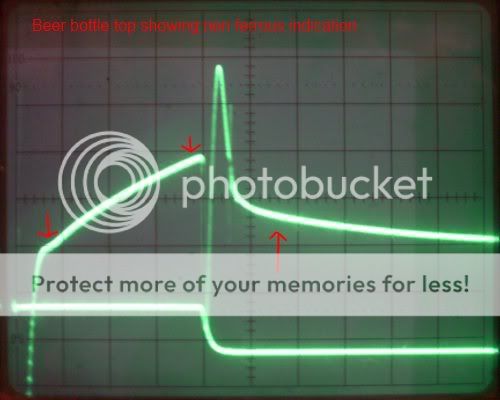Hi Guys,
Here is some photos of scope shots with different targets. The scope is hooked up to the output of a Minelab DD coil. The tx on duration is about 220us @ 5.95v, the flyback duration is 20us@ 50v.
Top trace 10mv/div receive coil
bottom trace 50v/div transmit ciol
5 us/div sweep
Control, no target

hotrock 1

hotrock 3

Largeish steel target

rusty nail

large lead bullet

5g nugget

Australian 20 cent piece

australian $2 cion

Aluminium heat sink

Beer bottle top showing non fe response

Beer bottle top showing fe response at different position on the coil

Enjoy!
Cheers Mick
Here is some photos of scope shots with different targets. The scope is hooked up to the output of a Minelab DD coil. The tx on duration is about 220us @ 5.95v, the flyback duration is 20us@ 50v.
Top trace 10mv/div receive coil
bottom trace 50v/div transmit ciol
5 us/div sweep
Control, no target

hotrock 1

hotrock 3

Largeish steel target

rusty nail

large lead bullet

5g nugget

Australian 20 cent piece

australian $2 cion

Aluminium heat sink

Beer bottle top showing non fe response

Beer bottle top showing fe response at different position on the coil

Enjoy!
Cheers Mick

 The original FB voltage was 180v and about 3.5us duration after 220us tx on.
The original FB voltage was 180v and about 3.5us duration after 220us tx on. Buggered if i know.
Buggered if i know.



Comment